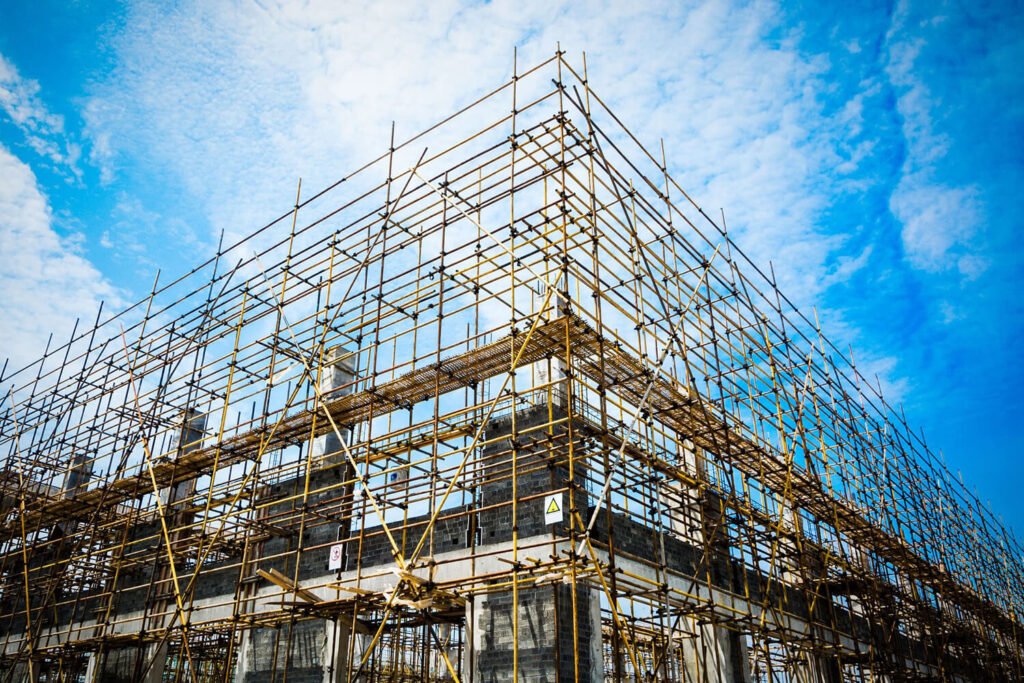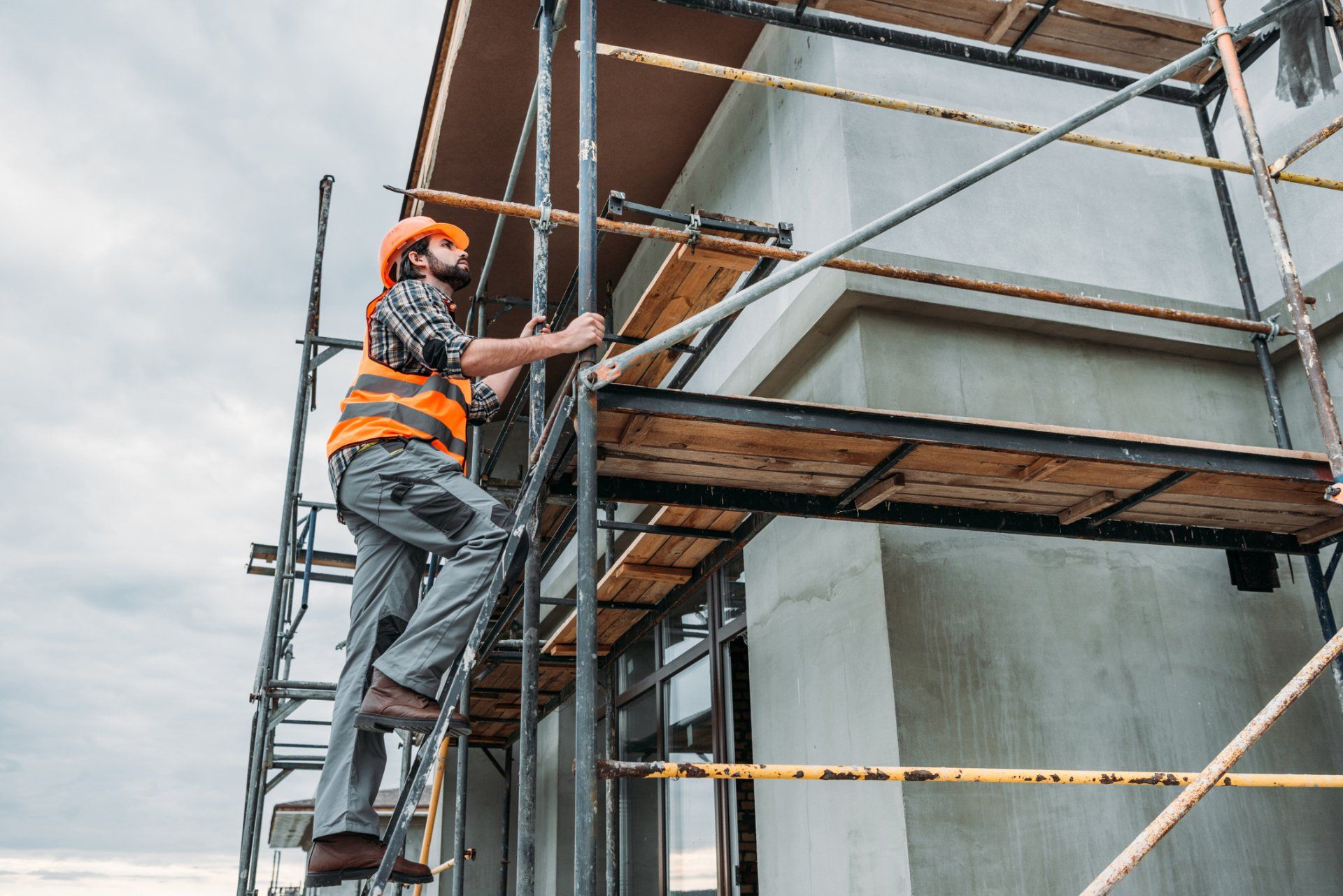Secure and Efficient Scaffolding in Surrey for Any Construction Task
Discovering the Different Kinds Of Scaffolding Utilized in Building And Construction Tasks
The construction sector relies greatly on various kinds of scaffolding to satisfy certain project demands, each offering unique benefits and applications. Conventional frame scaffolding supplies a durable structure for basic tasks, while suspended scaffolding is crucial for work on skyscraper structures.

Traditional Frame Scaffolding
Standard frame scaffolding is among the most extensively made use of approaches in the building and construction sector because of its effectiveness and flexibility. This system includes upright and horizontal structures that are put together to produce a stable platform for products and workers. The main components include upright articles, straight journals, and diagonal braces, which with each other offer a strong structure that can support substantial lots.
Among the essential benefits of conventional structure scaffolding is its flexibility to various building and construction tasks, varying from domestic buildings to big business structures. The modular design allows for easy assembly and disassembly, making it reliable for both long-term and temporary tasks. Additionally, the system can be personalized in height and width, accommodating various building styles and site problems.
Safety is vital in scaffolding applications, and conventional structure systems are outfitted with guardrails and toe boards to protect against drops and guarantee employee protection. Furthermore, routine assessments and adherence to safety regulations are crucial in maintaining the integrity of the scaffold. Generally, standard structure scaffolding remains an essential choice in the building market, giving a reputable system for labor and enhancing overall project effectiveness

Suspended Scaffolding
Suspended scaffolding supplies a distinct solution for building and construction jobs that call for access to elevated surface areas, especially in scenarios where traditional frame scaffolding might be impractical. This type of scaffolding is generally suspended from the roofing system or upper degrees of a structure, using a system of wheels, systems, and ropes to develop a working space that can be gotten used to different elevations.
Among the primary advantages of put on hold scaffolding is its versatility. It can be easily repositioned or lowered to accommodate changes in construction requirements, making it excellent for tasks such as home window installment, frontage job, and upkeep on high-rise buildings. Additionally, the very little impact of suspended scaffolding permits far better use ground area in city environments, where room is frequently restricted.
Safety is an essential factor to consider in the usage of put on hold scaffolding. Overall, suspended scaffolding gives a effective and efficient solution for accessing hard-to-reach locations in numerous construction circumstances, boosting both productivity and safety and security on website.
System Scaffolding
System scaffolding, typically considered a contemporary remedy in the scaffolding sector, contains pre-engineered parts that can be swiftly constructed and adapted for various construction tasks. Scaffolding. This sort of scaffolding is defined by its modular design, which enables for flexibility and effectiveness on work websites, suiting various heights and architectural requirements
Commonly made from high-strength steel or aluminum, system scaffolding offers improved longevity and stability. The elements consist scaffolding osha of upright articles, horizontal ledgers, and diagonal braces, which interconnect firmly, making certain a robust structure. The layout commonly incorporates standard fittings, simplifying setting up and disassembly processes, therefore minimizing labor time and costs.

Rolling Scaffolding
Moving scaffolding is a flexible alternative to typical set scaffolding, designed for mobility and simplicity of usage on building sites. This type of scaffolding consists of a platform sustained by frames with wheels, enabling workers to easily move it as required. The mobility attribute considerably improves performance, as it decreases downtime connected with assembling and taking apart dealt with scaffolding.
Typically constructed from lightweight products such as light weight aluminum or steel, rolling scaffolding uses a tough yet portable service for jobs needing regular repositioning - Scaffolding. It is particularly useful in tasks such as painting, drywall setup, and electric work, where accessibility to various heights and areas is needed
Security is extremely important in rolling scaffolding design, with functions such as locking wheels to avoid unintended motion when being used, and guardrails to protect workers from falls. In addition, many versions are adjustable in elevation, accommodating numerous job needs.
Cantilever Scaffolding

The layout of cantilever scaffolding commonly includes utilizing arms or brackets secured to a building or structure, making it possible for the platform to extend outside securely. Security is paramount; thus, these scaffolds must be engineered to stand up to ecological problems and numerous lots. Regular inspection and maintenance are important to guarantee structural honesty and employee safety.
Cantilever scaffolding is favored for its flexibility and effective usage of area, making it a preferred selection in urban environments where area restrictions are usual. Moreover, it helps with easier access to high elevations, inevitably contributing to the general scaffolding pipe efficiency of building and construction projects. Just like all scaffolding types, correct training and adherence to security requirements are important for employees making use of cantilever scaffolding.
Verdict
Typical structure scaffolding provides stability, while suspended scaffolding provides flexibility for elevated tasks. System scaffolding assists in fast setting up, and rolling scaffolding improves wheelchair for differing job settings.
Traditional frame scaffolding offers a strong foundation for general tasks, while suspended scaffolding is important for work on high-rise frameworks.Moving scaffolding is a flexible option to conventional fixed scaffolding, designed for mobility and convenience of usage on building sites. As with all scaffolding types, correct training and adherence to security requirements are crucial for workers making use of cantilever important link scaffolding.
Standard framework scaffolding provides security, while suspended scaffolding offers versatility for raised tasks. System scaffolding facilitates fast assembly, and rolling scaffolding enhances flexibility for varying work settings.